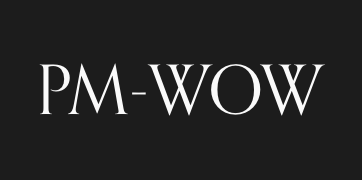Project Communication
Best Practices for Project Communication to Stakeholders and Sponsors
Introduction
Communication is the lifeblood of successful project management — especially when it comes to stakeholders and executive sponsors. These individuals may not be involved in day-to-day execution, but their support, guidance, and decisions are crucial to the project’s success.
Effective project communication builds trust, prevents surprises, and keeps everyone aligned. But doing it right takes more than just sending status updates. It requires strategy, empathy, and consistency.
Here are the top best practices to ensure your project communication hits the mark with stakeholders and sponsors.
1. Understand Your Stakeholders
Not all stakeholders are created equal. Some need high-level summaries, while others want granular details. Start by mapping out your stakeholder and sponsor profiles:
What are their roles?
How involved do they want (or need) to be?
What decisions are they responsible for?
What are their communication preferences (email, meetings, dashboards)?
Tip: Use a stakeholder matrix to classify and prioritize communication efforts.
2. Set Clear Communication Expectations Early
At the start of a project, establish a communication plan. This outlines who gets what information, how often, and in what format. Agreeing on expectations up front minimizes confusion and ensures no one feels left in the dark.
Include:
Communication frequency (weekly, monthly, ad hoc)
Formats (emails, reports, presentations, dashboards)
Meeting cadence (e.g., monthly steering committee)
Pro Tip: Document this plan and revisit it as the project evolves.
3. Be Transparent — Especially When Things Go Wrong
Sponsors don’t expect perfection. They expect visibility and honesty. If the project is at risk, say so. Clearly communicate the issue, its impact, and what’s being done about it. Sugar-coating problems only delays solutions and damages credibility.
Golden Rule: Bring problems with a plan, not just a complaint.
4. Communicate with Purpose
Every communication should have a clear objective: inform, align, request support, or escalate a decision. Avoid noise and keep it focused on what matters to the audience.
Ask yourself:
Why am I sending this?
What action (if any) is needed?
Does it support project goals or decision-making?
Avoid: Vague updates or data dumps with no analysis or context.
5. Use the Right Level of Detail
Executive sponsors want the big picture: timelines, budgets, risks, and outcomes. Mid-level stakeholders might need more details to manage their dependencies. Don’t overwhelm sponsors with technical jargon or excessive operational minutiae.
Best Practice: Use an "executive summary first" approach — headline insights followed by optional details.
6. Make It Visual
Visuals like timelines, status dashboards, or milestone charts communicate more clearly than walls of text. They help busy stakeholders grasp progress and issues at a glance.
Use visuals to show:
RAG status (Red, Amber, Green)
Progress toward key milestones
Budget or resource trends
Risk exposure levels
7. Create Opportunities for Two-Way Communication
Communication shouldn’t be one-sided. Sponsors and stakeholders can offer insights, unblock issues, or raise concerns — but only if they’re given the space to do so.
Leave time for questions in meetings
Proactively ask for feedback
Offer open channels for concerns or suggestions
Tip: Listening is just as important as updating.
8. Stay Consistent
Regular, predictable communication builds trust. Inconsistent updates create uncertainty and can signal disorganization — even if the project is on track.
Stick to your communication schedule, even if there’s "nothing new" to report. A short update is better than a communication vacuum.
9. Track and Document Communication
Keep a record of key communications, decisions, and stakeholder inputs. This helps avoid misunderstandings and ensures alignment over time. It also provides a valuable audit trail if issues arise later.
Include: Meeting notes, decision logs, action items, and formal reports.
10. Tailor Communication Over Time
Projects evolve — and so do stakeholder needs. As the project progresses, revisit your communication approach. Sponsors may want more frequent updates during critical phases or less detail once the project is stable.
Adapt and adjust — flexibility is key to keeping communication effective.
Conclusion
Project communication to stakeholders and sponsors is not just about transmitting information — it’s about building alignment, trust, and momentum. When done well, it empowers sponsors to support your efforts, make informed decisions, and champion your project from start to finish.
By applying these best practices, you’ll not only manage expectations — you’ll exceed them.
